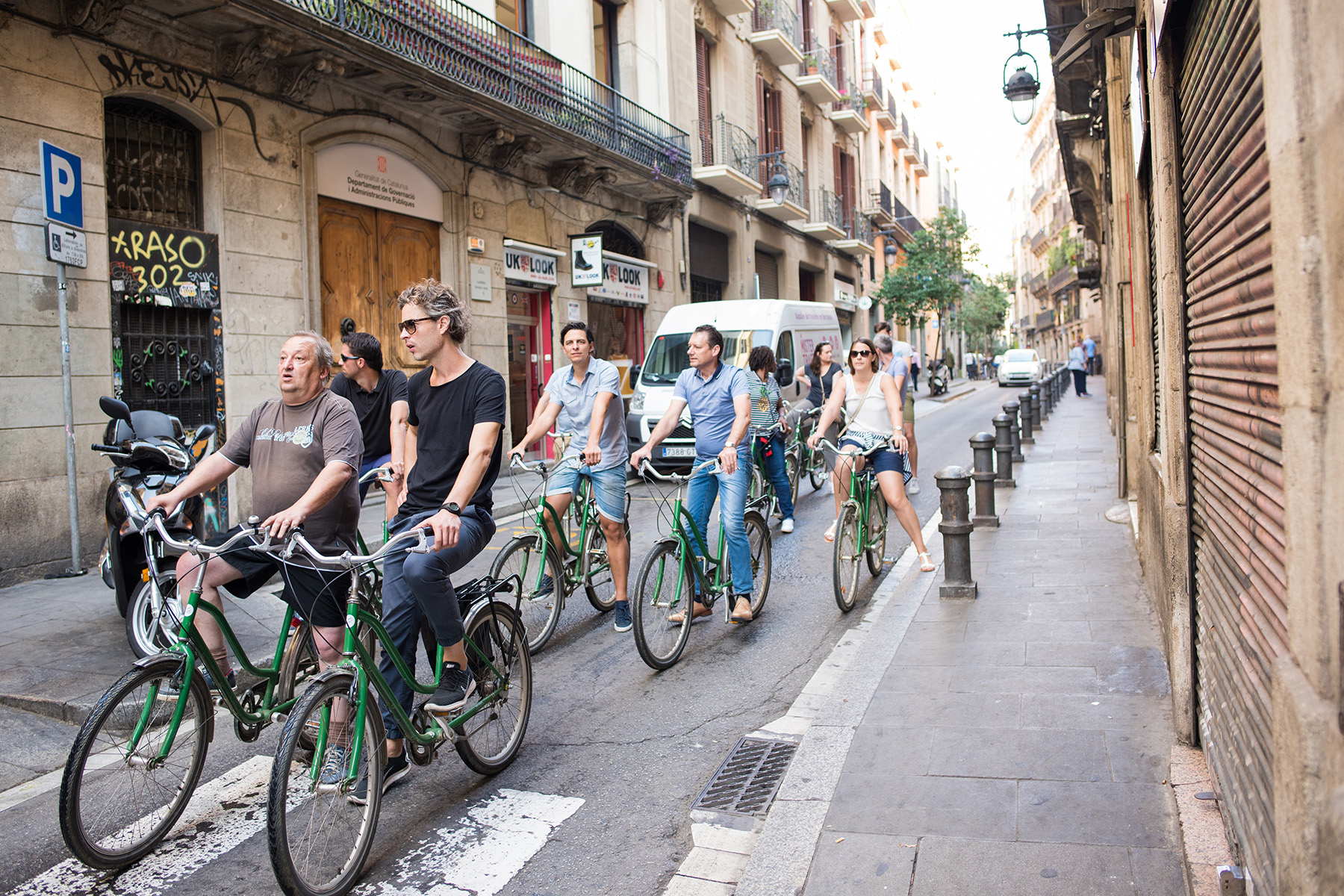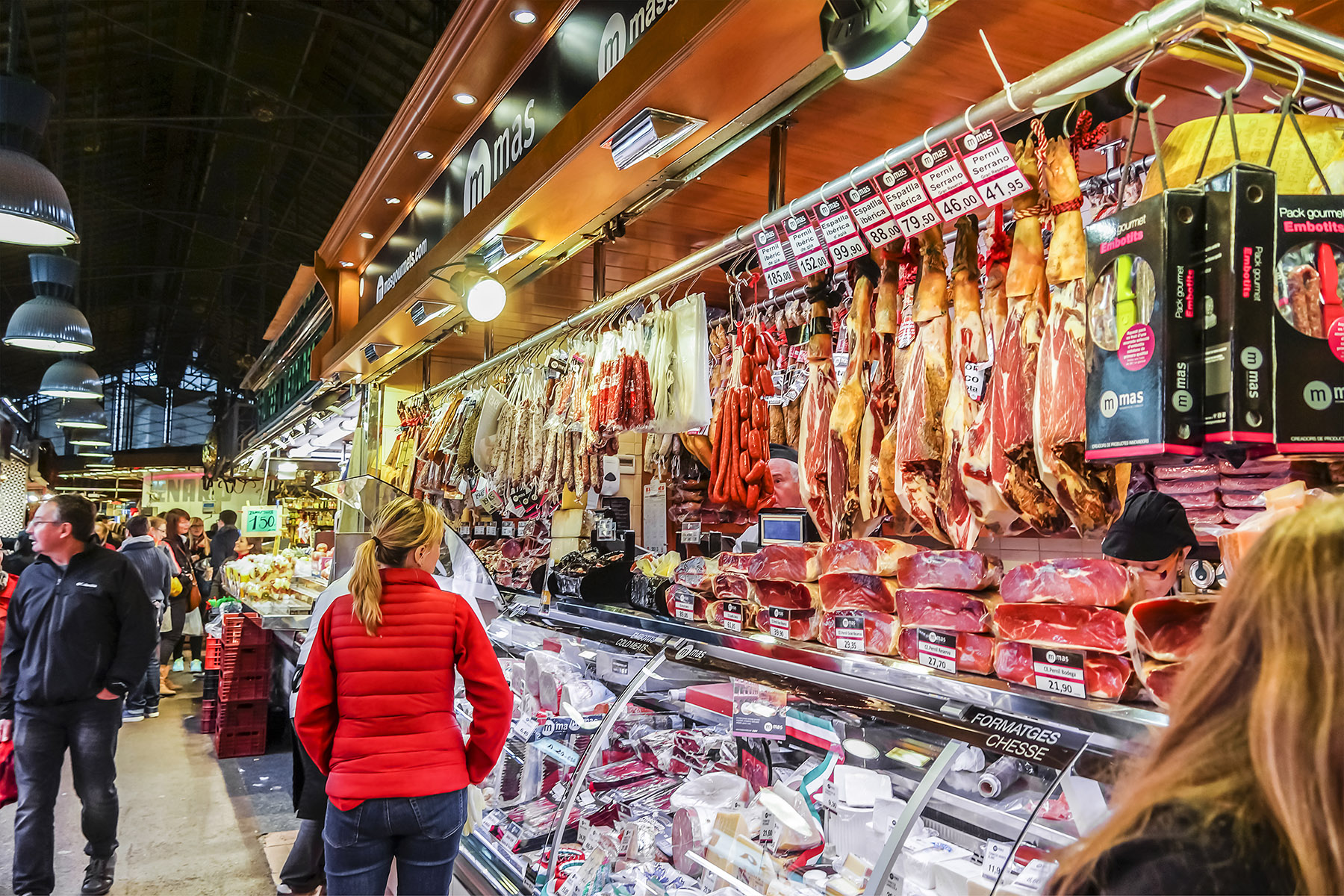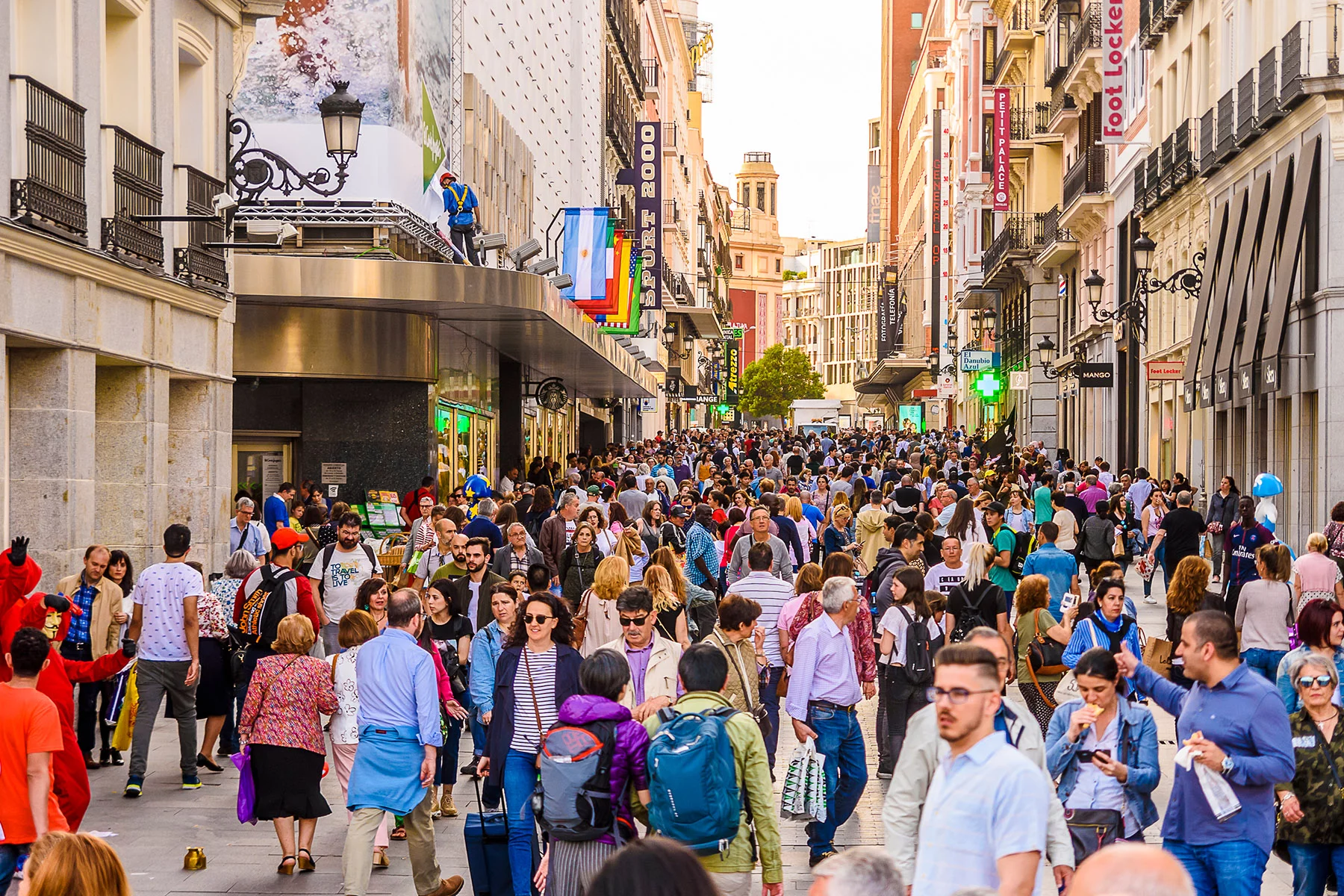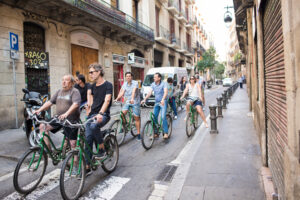If you move to Spain, you’ll face many exciting challenges. From how to open a bank account to navigating public transport, certain aspects of life are essential to understand. Although recycling and garbage collection may not be the most enticing aspect of moving abroad, they are still critical to know about when settling into Spanish life. In addition, learning how to sort your waste will help you to reduce your use of plastic and live sustainably in Spain.
To prepare you for what to expect in your new Spanish home, you can find the following information below:
Spain’s recycling system
The European Commission has set a target that 60% of waste should be recycled by 2030. Currently, Spain still lags behind, at 35%, missing its 2020 target of 50%, according to a 2021 report by the Cotec Foundation for Innovation. Despite this setback, recycling in Spain is on the increase. In 2020, 38.9 million Spaniards claimed they recycled daily, 5.9 million more than five years ago. Recycling is one of the fundamental elements of a circular economy, which Spain aims to achieve by 2050, in line with the EU’s goals.
Tasa de basura is an annual tax that pays for waste collection. The amount varies depending on where you live.

The Spanish government has several initiatives to reduce landfill waste and increase recycling. Since July 2022, all municipalities with more than 5,000 citizens must have separate collection systems for paper, metal, plastic, glass, and organic waste. In 2021, Ecoembes, the NGO responsible for recycling packaging, created the Reciclos app, which rewards users for recycling their cans and plastic bottles. Reciclos has special bins across the country in transport stations, hospitals, ports, shopping malls, and leisure centers.
What happens to recycled materials in Spain
Each type of recycling undergoes a different process. They first need to be sorted, compacted, packaged, and distributed to recycling centers.
Ecoembes handles the recycling for household packaging, including materials such as plastic, metals, and paper. It’s the user’s responsibility to place the item in the correct bin. Once the bins are full, the packaging is picked up and classified and made into new materials – these can go on to become new packaging, containers, construction materials, textiles, and more.
Glass, which is 100% recyclable, is cleaned and crushed. Factories then receive the glass, which they melt and mold into a new container. Meanwhile, organic waste can become compost or contribute to biogas production.
Finally, the waste in grey bins is transported to an eco-park, where it undergoes a final treatment to remove any last recyclable materials. Residual waste is then sent to landfills or incinerated. Although Spain has several initiatives and processes for recycling, Ecoembes has received criticism, as activists claim that 50% of the country’s plastic containers still end up in landfills.
How to recycle in Spain
When recycling in Spain, you’ll need to put your recyclable items in separate bins, depending on their category. You can find these bins attached to the sidewalk – they are hard to miss, thanks to their vibrant colors. These colors indicate which type of waste you can place into them.
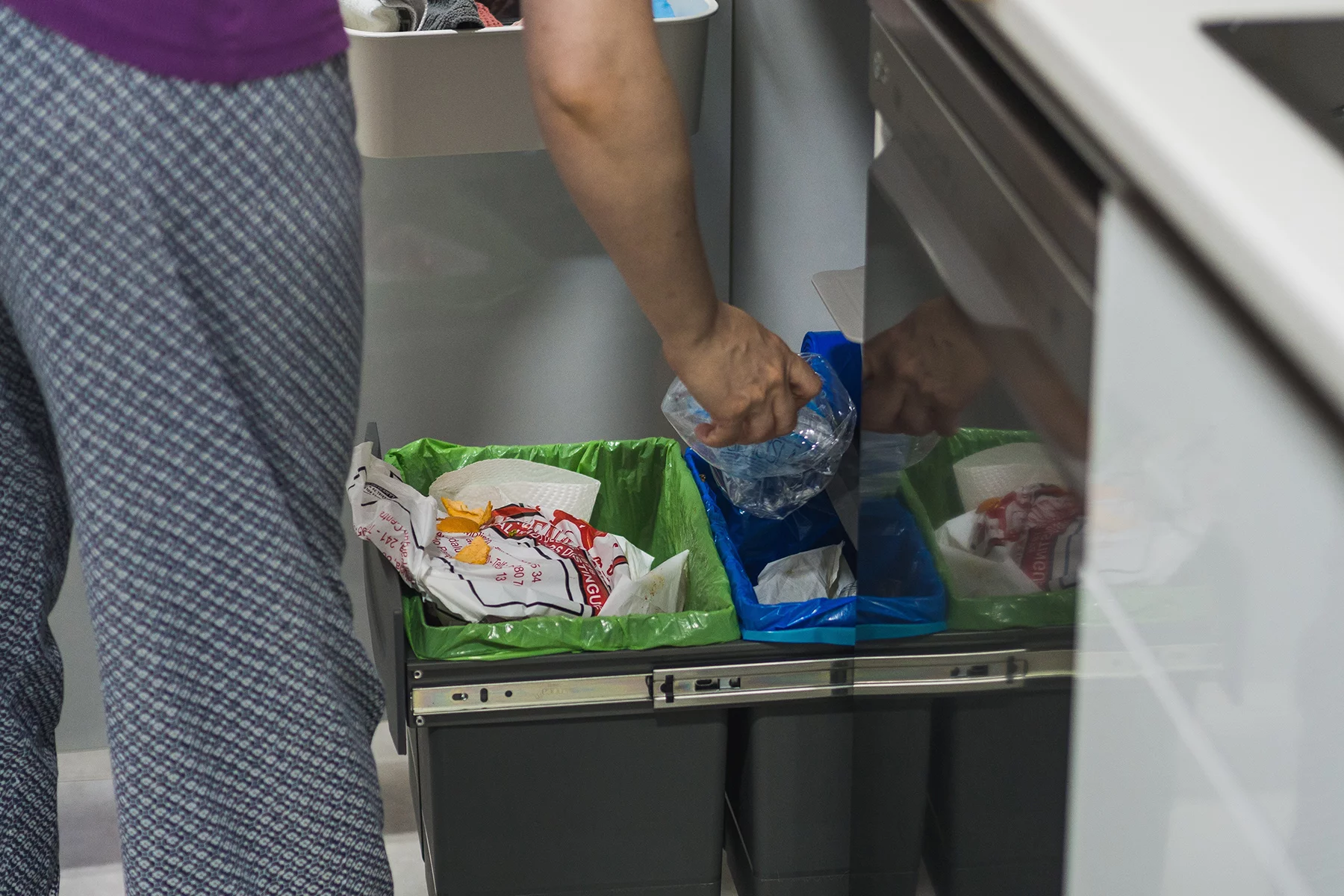
Keep in mind, however, that each municipality has slight variations on bin colors and what goes into each bin, so check the details for where you plan to live. Bins for paper, cardboard, glass, and aluminum cans are usually next to regular rubbish bins.
Recycling paper
ASPAPEL, the Spanish Association of Pulp, Paper, and Cardboard Manufacturers, recorded that in 2021, 4.3 million tonnes of paper were collected, and 5.3 million tonnes were recycled.
Paper and cardboard go in blue bins in Spain – these bins are the easiest to navigate, as you may only place paper and cardboard in them. It’s a good idea to fold your cardboard boxes to allow more space for other users’ recycling.
In Spain, you can put the following waste items in the blue bin:
- Cardboard boxes
- Cereal boxes
- Newspapers and magazines
- Wrapping paper
- Food containers
- Envelopes
- Used sheets of paper
The most common mistake made with the blue bins is depositing tetra paks – these actually belong in the yellow (packaging) bin, as they consist of cardboard, plastic, and aluminum. Do not put dirty napkins or papers in the blue bin – they belong in the organic waste container.
How to recycle plastic
In 2023, Spain brought in a tax on single-use packaging to discourage the use of plastic. The country is the fifth-largest producer of disposable plastic bottles in the EU, so it’s no wonder recycling is on the agenda.
There are 383,508 yellow bins in Spain – you should be able to find one within 100 meters of your home. Factories might burn non-recyclable plastic to generate energy. The rest ends up in landfills or incinerated. If the plastic reaches a landfill, not only is it impossible to reuse, but it also affects the decomposition of organic waste, generating even more pollution. Remember to rinse your plastic food or drink containers and crush them as much as possible so more can fit in the recycling truck.
You can deposit the following plastic objects in the yellow bin:
- Plastic bottles
- Tin cans
- Plastic bags (except garbage bags)
- Yogurt pots and lids
- Tetra Paks and cartons: milk, juice, soup, etc.
- White foam trays
- Toothpaste tubes
Not every plastic object belongs in the yellow bin. Use the non-recyclable waste bin to throw away toys, baby bottles, kitchen utensils, lunch boxes, aluminum coffee capsules, or silicone cooking molds.
Recycling glass
Glass recycling goes in the green, dome-shaped bin. Data from Ecovidrio states that 7 out of 10 glass packaging items are recycled in Spain, and each person recycles an average of 19kg of glass a year. Spain has around 230,950 containers for recycling glass. This means there is one container for every 204 inhabitants, the highest in Europe.
Remember to rinse out your glass and remove bottle tops, as they are likely plastic. Handily, all colors of glass go in the same green igloo. Types of household glass you can recycle in Spain include:
- glass bottles
- glass flasks (such as perfume or cologne containers)
- food jars (for jellies, preserves, etc.)
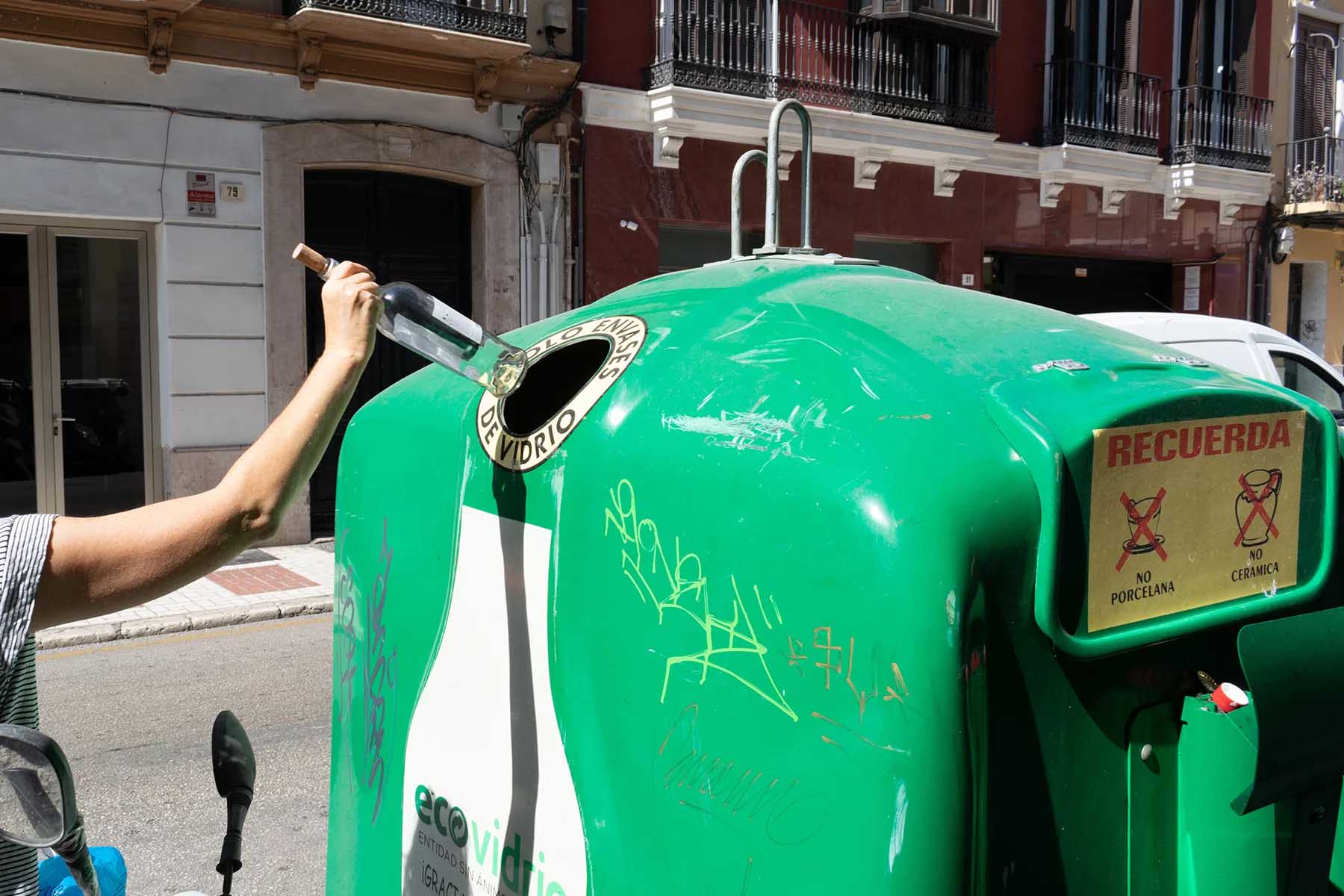
Be careful when sorting through your recycling, as it can be easy to mistake crystal for glass. It’s also important not to put lightbulbs, mirrors, ashtrays, drinking glasses, and dishes in the glass recycling. These items must go to special collection points.
Recycling metal
Metal is the most recycled material in Spain. 83.6% of metal is recycled in the country, 3.6% higher than the EU’s target of 80%. In Spain, most metals can go in the yellow bins – these household items include:
- metal caps and plugs
- aluminum trays
- tin foil and aluminum foil
- aerosols
- deodorant spray cans
If you have scrap metal or larger pieces that won’t fit in the yellow bin, you have two options. In some areas of Spain, mobile vans collect your scrap metal from your neighborhood. Otherwise, you can deposit it at a permanent recycling center. It is possible to recycle ingots, alloys, and billets in Spain. You can check out your local metal recycling businesses on Europages.
How to recycle clothes and textiles
Most neighborhoods have special containers for clothes and shoes. They might also have small local enterprises that collect used clothes to sell or give them to people in need.
The most famous initiative in Spain is Humana. The foundation collects shoes, clothes, and fabrics from 5,000 containers throughout the regions of Andalusia, Asturias, Castilla La Mancha, Castilla y León, Cataluña, Comunidad Valenciana, Extremadura, Galicia, Madrid, Islas Baleares, Navarra, and La Rioja.
They collect, on average, 18,000 tons of clothing and footwear every year. 14% of this goes to Humana second-hand shops and 40% is sent abroad. The rest of the clothes, which cannot be reused as garments, are sold to textile recyclers or sent to waste treatment facilities.
Recycling other household items
There are some household items that just don’t fit into any of the colored bins. In DIY stores, such as Leroy Merlin, you can dispose of small old electrical appliances, lightbulbs, and batteries. Many supermarkets, including Mercadona, have a used battery collection point.
For medications, wrappers, pill packs, boxes, and medicine bottles, find a SIGRE point at a local pharmacy. The chemicals are destroyed and cleaned from the packaging and then recycled via the usual channels.

If you are lucky enough to live in a city, you will likely find puntos limpios. These multi-colored brown and silver bins are found outside supermarkets, train and metro stations, and shopping malls. The types of items that you can recycle in these types of containers include:
- bottles of vegetable oil
- books
- magazines
- bottle caps and lids
- batteries
- aerosols
- light bulbs
- printers and ink cartridges
- small electronic devices and appliances – CDs and DVDs
- coffee pods (Nescafé, Nespresso, etc).
Find your nearest puntos limpios with OCU’s online search tool.
Composting and food waste in Spain
There are two containers to use when disposing of food waste in Spain: orange ones and brown ones.
The orange container is for leftover cooking oil which can be used for soap or biodiesel. Meanwhile, the brown ones are less common – they are not available in all areas, but they can be used for the following:
- fruit skins
- fish bones
- plants
- eggshells
- coffee grounds
- napkins and kitchen towels
From January 2024, all municipalities in Spain will be required by law to collect organic waste from the brown container. Remember to put your compost in a compostable bag before you put it in the brown bin to avoid attracting pests.
Don’t put any non-organic waste in the bin, such as ceramic objects, diapers, cigarette butts, chewing gum, wet wipes, pet litter, or dust. If you want to start composting, but don’t have a brown container in your area, you can learn to make your own compost for your garden.
Spanish garbage collection
Spain’s municipalities are responsible for managing household waste and recycling. Usually, trucks come daily to collect the non-recyclable grey bins. Refuse collection varies depending on region – you can find out more from your town hall (ayuntamiento).

For example, in Santander, the Ciudad Santander app allows citizens and visitors access to information about bulk waste pickup, schedules, and recycling services. If you are still unsure how recycling works in Spain, download Ecoembes’s AIR-e app, a chatbot that responds to any recycling-related questions.
Penalties for illegally dumping waste or recycling in Spain
Fly-tipping is a serious offense in Spain and can result in fines of €1,500–40,000. There are also penalties of up to €300,000 for dumping hazardous waste or fly tipping in protected areas and national parks. Therefore, it is safe to say that the Spanish authorities take waste management very seriously.
Useful resources
- Miteco.gob.es – official government website compiling data on waste management in Spain
- European Environment Agency – provides independent information on the environment in Europe
- Ecoembes – a comprehensive guide on how to separate your recycling in Spain

